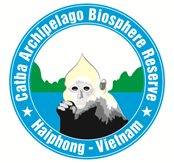MAN AND BIOSPHERE (MAB) PROGRAM
The MAB Programme Launched in 1971, UNESCO’s Man and the Biosphere (MAB) Programme is an intergovernmental scientific programme that, from its beginning, has aimed to establish a scientific basis for the improvement of relationships between people and their environments. MAB combines the practical application of natural and social sciences, economics and education to improve human livelihoods and the equitable sharing of benefits, and to safeguard natural and managed ecosystems, promoting innovative approaches to economic development that are socially and culturally appropriate and environmentally sustainable. In practice, the MAB Programme is implemented in biosphere reserves. They may contain terrestrial, coastal and/or marine ecosystems, which should be representative of their biogeographic region and of significance for biodiversity conservation. Each biosphere reserve promotes solutions reconciling the conservation of biodiversity with its sustainable use, towards sustainable development at the regional scale. While biosphere reserves are 4 nominated by national governments and remain under the sovereign jurisdiction of the states where they are located, their global status as biosphere reserves is internationally recognized. Biosphere reserves are models to test and apply interdisciplinary approaches to understanding and managing changes in social and ecological systems, and their interaction, including conflict prevention and the conservation of biodiversity.
Vision and Mission of the MAB Programme
Our vision is a world where people are conscious of their common future and interaction with our planet, and act collectively and responsibly to build thriving societies in harmony within the biosphere.
The MAB Programme and its World Network of Biosphere Reserves (WNBR) serve this vision within and outside biosphere reserves.
Our mission for the period 2015-2025 is to:
- Develop and strengthen models for sustainable development in the WNBR;
- Communicate the experiences and lessons learned, facilitating the global diffusion and application of these models;
- Support evaluation and high-quality management, strategies and policies for sustainable development and planning, as well as accountable and resilient institutions;
• Help Member States and stakeholders to urgently meet the Sustainable Development Goals through experiences from the WNBR, particularly through exploring and testing policies, technologies and innovations for the sustainable management of biodiversity and natural resources and mitigation and adaptation to climate change.
